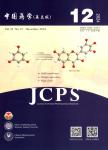Study of parameters affecting infection risk from contaminated injectable products using multiple spot contamination model: a case study of insulin vials
Study of parameters affecting infection risk from contaminated injectable products using multiple spot contamination model: a case study of insulin vials作者机构:Hikma Pharma for Pharmaceutical Industry2nd Industrial Zone
出 版 物:《Journal of Chinese Pharmaceutical Sciences》 (中国药学(英文版))
年 卷 期:2016年第25卷第11期
页 面:832-837页
核心收录:
学科分类:1007[医学-药学(可授医学、理学学位)] 10[医学]
基 金:supported and partially financially by HIKMA Pharma Pharmaceutical Company-2nd Industrial Zone-6th of October city Egypt
主 题:Insulin vials Staphylococcus aureus Pseudomonas aeruginosa Multi-spot contamination PET Simulation study
摘 要:Infections of patients from consumption of contaminated pharmaceutical products constituted major health risk problems. Medicinal products are liable to microbial intrusion during in-use application. The current study focused on repeated contamination with constant level of microbiological burden by two bacteria viz. Staphylococcus aureus and Pseudomonas aeruginosa were used as dose-response models for infection through two different routes of administration. Nine different forms of insulin vials were subjected to this type of simulation study at constant assumed level of contaminations, preservative efficacy test(PET) and dose potency. Multi-spot contamination imitation study showed that initial fast rise in contamination, followed shortly by longer but steeper slope which finally turned into higher rate of contamination during the few last doses of the unit dosage forms, where the volume of the product became increasingly and progressively very small. When the probability of infection curves was constructed, both S. aureus and P. aeruginosa showed same pattern, with notably higher risk from septicemia route of the latter rather than subcutaneous route of the former. The present simulation study showed that continuous use of the same contaminated syringe progressively increased the risk of infection, especially at final few doses(between 3th and 10 th last doses depending on the dosage form sizes in the vials and the administration volumes) of the product. Small volume parenterals(SVP) are especially products at higher risk than the larger volume ones.




